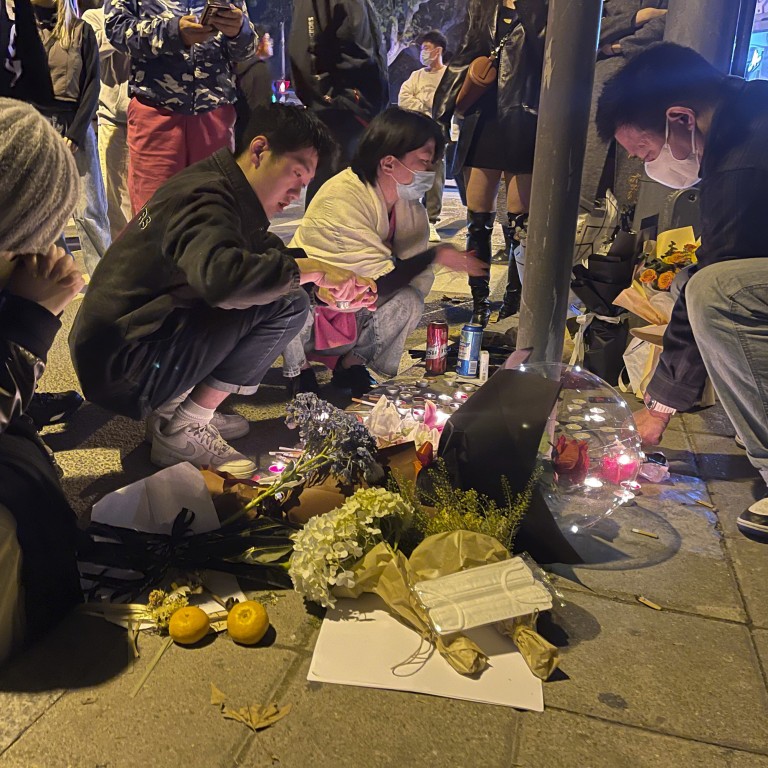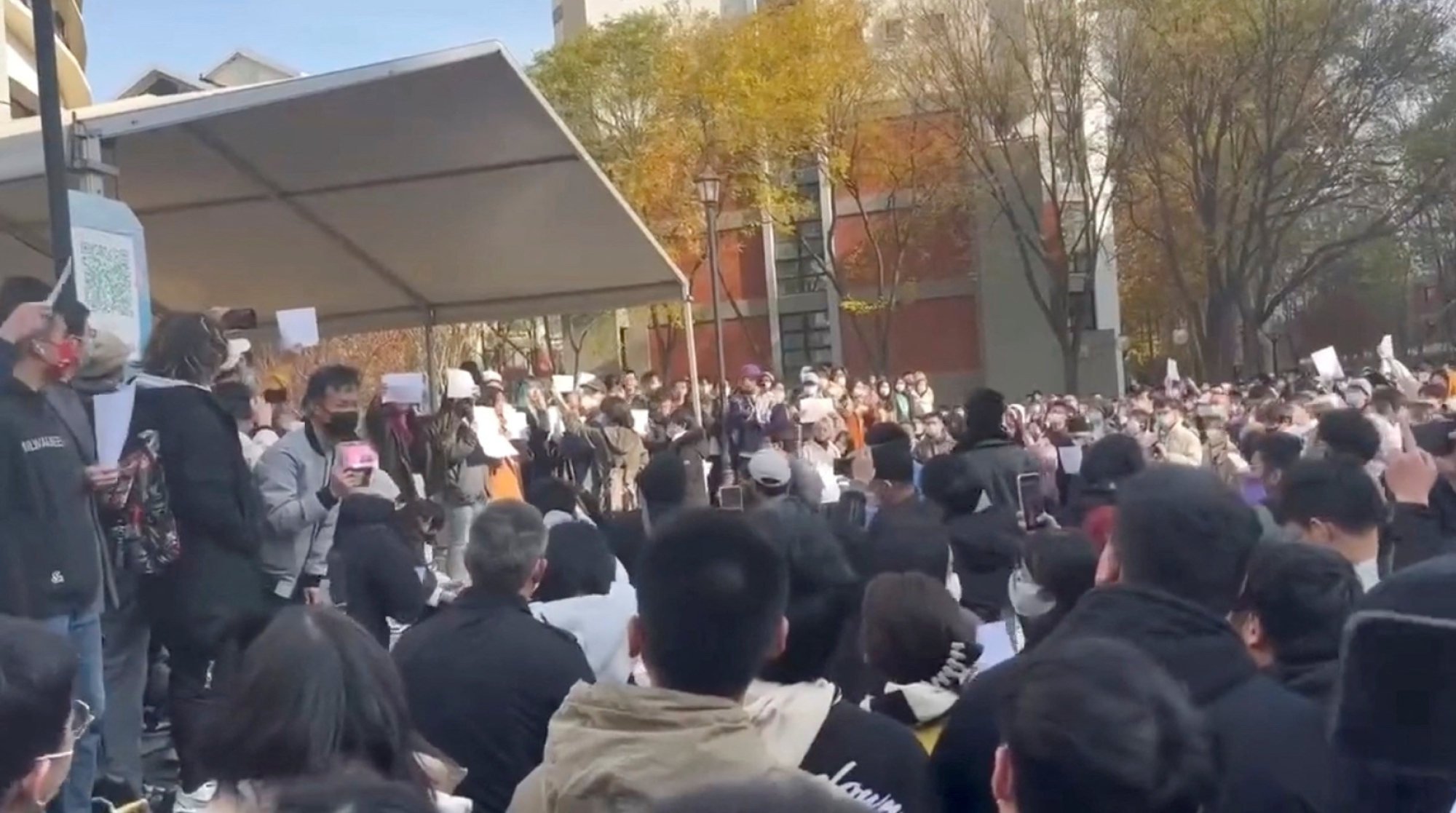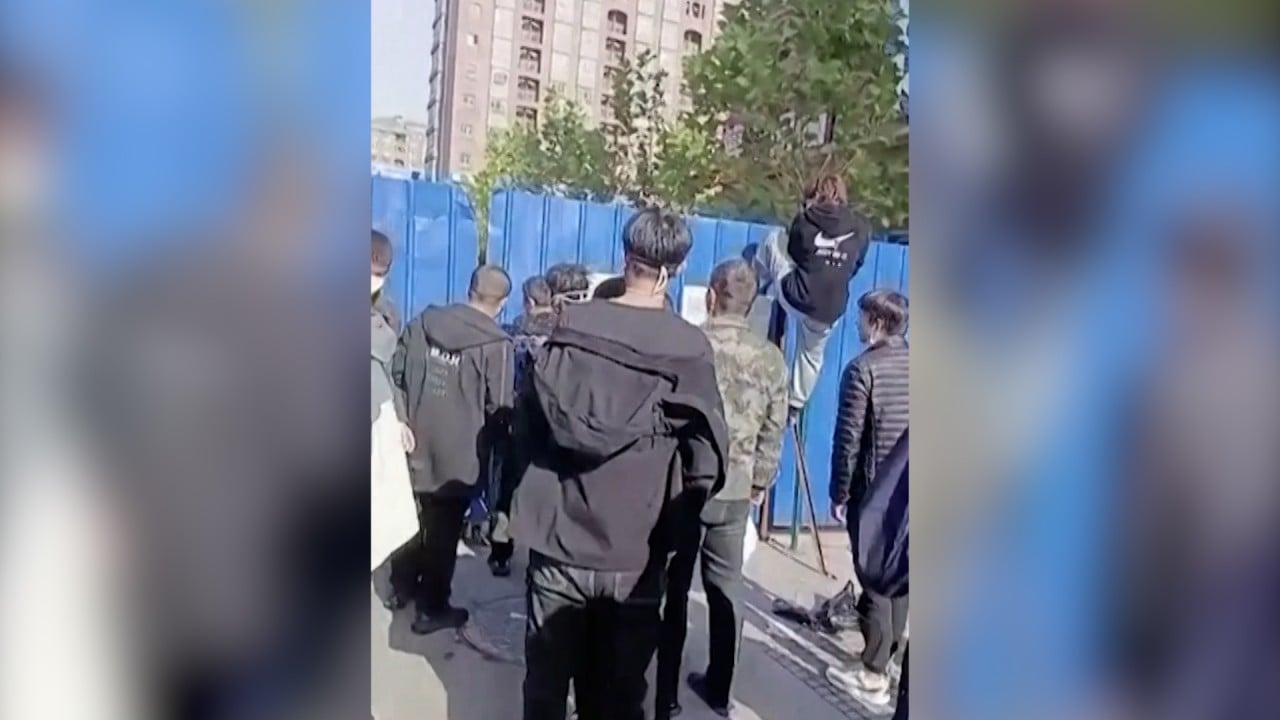
Anti-Covid lockdown protests flare across China after deadly Urumqi fire
- Residents and students gather in major cities including Beijing and Shanghai reflecting growing public impatience
- Authorities show little sign of relenting on the zero-Covid approach as case numbers and the personal toll mount
Open defiance is rare in China, especially directed at the central government and the ruling Communist Party.

The tragedy prompted widespread fury on the internet as many believed Covid restrictions prevented the victims from fleeing, claims that local officials rejected.
The next day, hundreds of angry residents took to Urumqi’s streets demanding an end to the lockdown that has barred 4 million residents from leaving their homes for 100 days.
Authorities in Xinjiang announced on Saturday that coronavirus restrictions would be lifted “in phases” but the assurances failed to stop protests spreading to the country’s most affluent cities and among young students, underlining the growing public impatience and grievances nearly three years into the pandemic.
In Beijing and elsewhere, residents gathered to confront local authorities over restrictive measures and repeated Covid tests. Many small vigils and protests were also reportedly held at universities in Beijing, Xian, Nanjing, Chongqing, Chengdu, Wuhan and other cities.
Many protests could not be immediately confirmed or independently verified.
One video posted online appeared to show Beijing residents in an unidentified part of the capital marching around an open-air car park on Saturday, shouting “End the lockdown!”

According to reports and videos posted on Twitter and other social media sites, a few hundred students gathered at Tsinghua University, Xi’s alma mater, on Sunday afternoon, chanting “Democracy, the rule of law and freedom of expression”.
Peking University students also protested on Saturday evening, painting slogans on building walls including “We want freedom, not lockdowns” and “Dynamic zero-Covid is a lie” – all while singing “The Internationale” in front of a group of uniformed security guards.
Videos showed the slogans had been removed by university authorities when students returned and held another protest on Sunday.
Another viral video showed hundreds of students at Communication University of China, Nanjing holding up sheets of white paper and chanting “Long live the people, may the dead rest in peace”, at a vigil on Saturday evening for the victims of the Xinjiang fire.
When students refused to disperse at the requests of teachers, a university official could be heard warning that “one day you will pay for what you did today”.
The largest protest occurred in Shanghai, China’s most populous city and financial hub, where about 300 residents gathered in the early hours of Sunday at Middle Wulumuqi Road – which borrows its name from Urumqi.
In memory of the Xinjiang victims, they brought flowers, candles and signs reading “Urumqi, November 24, those who died rest in peace” and shouting “Lift lockdown for Urumqi, lift lockdown for Xinjiang, lift lockdown for all of China”, according to a widely circulated video clip.

Fresh protests broke out in Shanghai late on Sunday afternoon and continued into the night. Police started to set barriers and sealed off intersections in Anfu and Wuyuan roads before 5pm but more people gathered.
They sang China’s national anthem and “The Internationale” and shouted slogans such as “People’s police are for the people”, “Release the detained” and “Long live the people”.
Witnesses told the Post that some were taken away by police as the protest was broken up, but the detainees were not necessarily those who shouted slogans.
Still, about 500 people, mostly in their twenties, gathered at the intersection of Changshu and Wuyuan roads in the evening, with about 10 holding up white paper and slogans to protest against the zero-Covid policy.
“We did nothing wrong and we were just here to express our own opinion,” said one woman who led the crowd to sing the national anthem. “They do not even give us freedom of speech. Our voices should be heard.”
Police officers tried to disperse the crowd. “Go home and watch the Fifa World Cup game now,” one officer said. “Do not waste your energy here and go back to enjoy your life.”
Similar protests also broke out in Wuhan and Chengdu on Sunday evening, videos on social media showed.
In recent weeks, protests have erupted in Guangdong, Zhengzhou, Lhasa and other cities, with participants asking for an end to prolonged lockdowns and Covid tests.
Residents in Lanzhou smashed testing booths and Covid staff tents on Saturday, complaining about being put under lockdown even though no one had tested positive, according to Reuters.
While Beijing moved to ease public discontent with a series of new rules early this month, such as shortening quarantine times for inbound travellers, there is little sign that the central government has any plans to loosen its zero-Covid policy.
On Sunday, People’s Daily, the party’s mouthpiece, vowed in a front-page commentary to “unwaveringly” stick with the existing controls.
In remarks that appeared to aimed at widespread doubts and dissatisfaction, it again touted China’s self-claimed victory in controlling the pandemic so far and called on party cadres at all levels to “resolutely overcome misunderstandings”, slackness and “war weariness”.
During an inspection trip on Thursday, Vice-Premier Sun Chunlan urged Chongqing authorities to “try their best to contain the Covid-19 outbreak” and return life back to normal “as quickly as possible”, according to state media.
China on Sunday reported a fourth straight day of record cases. As many as 412 million people were affected by lockdown measures in mainland China, according to Nomura, a Japanese brokerage, last week, up from 340 million the week before, amid predictions by economists about a contraction of China’s GDP this quarter.


